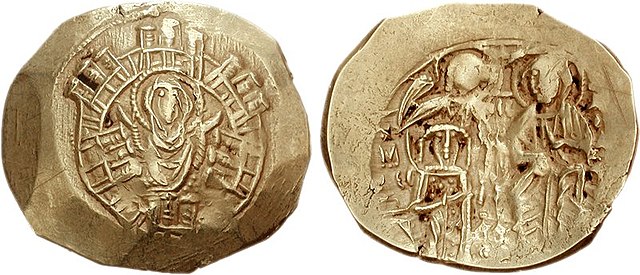The Gasmouloi or Vasmouloi were the descendants of mixed Byzantine Greek and "Latin" unions during the last centuries of the Byzantine Empire. As the Gasmouloi were enrolled as marines in the Byzantine navy by Emperor Michael VIII Palaiologos, the term eventually lost its ethnic connotations and came to be applied generally to those owing a military service from the early 14th century on.
The Byzantine emperor Michael VIII Palaiologos, who enrolled the Gasmouloi as marines in his fleet.
Byzantine–Venetian treaty of 1277
The Byzantine–Venetian treaty of 1277 was an agreement between the Byzantine Empire and the Republic of Venice that renegotiated and extended for two years the previous 1268 treaty between the two powers. The agreement was beneficial for both sides: Byzantine emperor Michael VIII Palaiologos kept the Venetians and their fleet from participating in the attempts of Charles of Anjou to organize an anti-Byzantine crusade, while the Venetians were able to retain their access to the Byzantine market, and even augment their trading privileges by gaining direct access to the Black Sea and the right to their own quarters in Constantinople and Thessalonica. Furthermore, they were able to stop the Byzantine reconquest of Venetian-aligned territories in the Aegean, although the treaty explicitly allowed both sides to continue fighting for control of the island of Euboea (Negroponte). Nevertheless, the agreement's short duration made clear that for both parties, it was a temporary expedient. After the treaty expired, the Venetians allied with Charles of Anjou, but their plans were thwarted by the outbreak of the War of the Sicilian Vespers in 1282, forcing Venice once more to renew the peace with the Byzantines in 1285.

Emperor Michael VIII Palaiologos (14th-century miniature from George Pachymeres' History).
Portrait of Doge Jacopo Contarini, from the Storia dei Dogi di Venezia, 1867
Hyperpyron of Michael VIII Palaiologos



